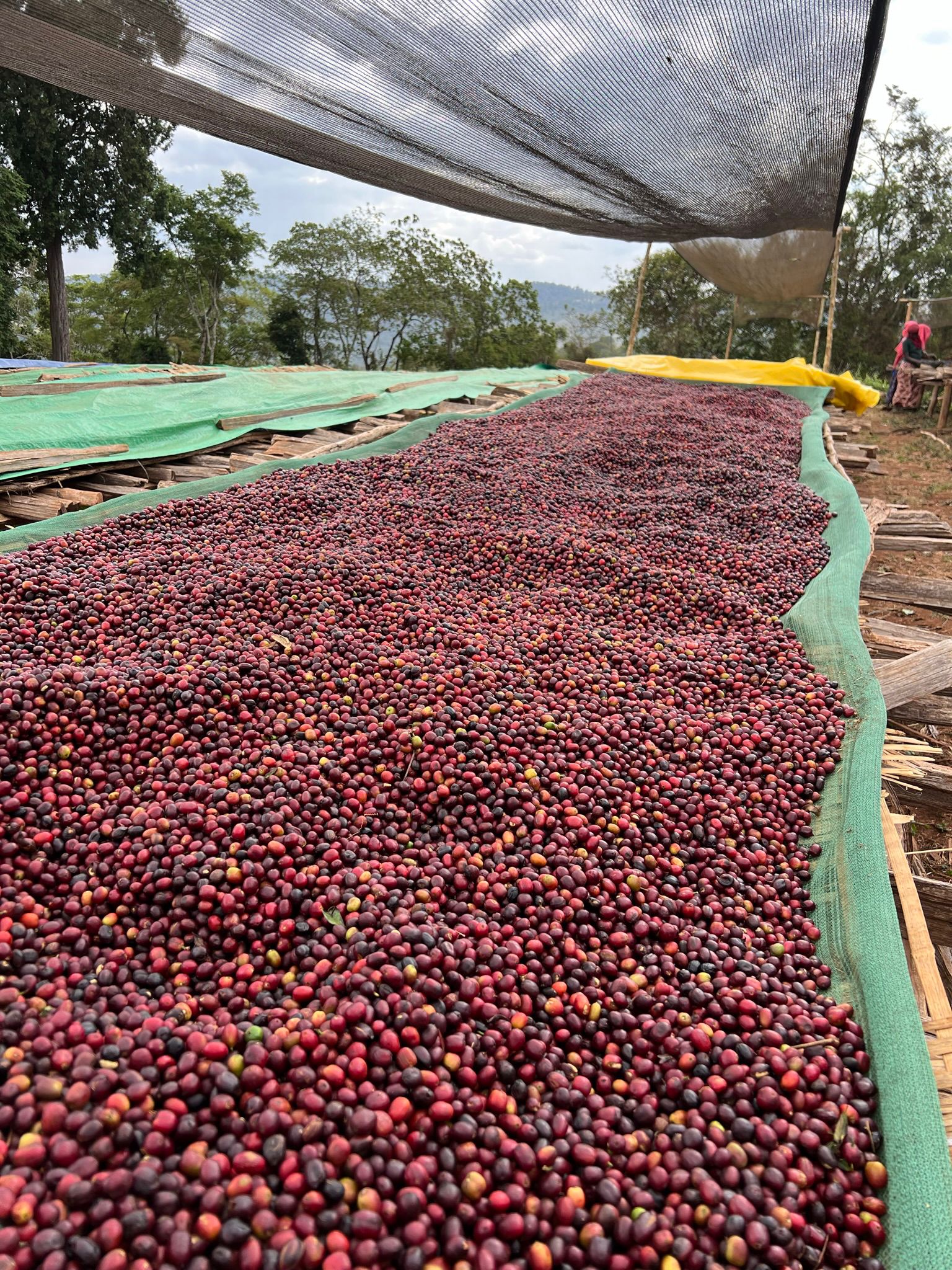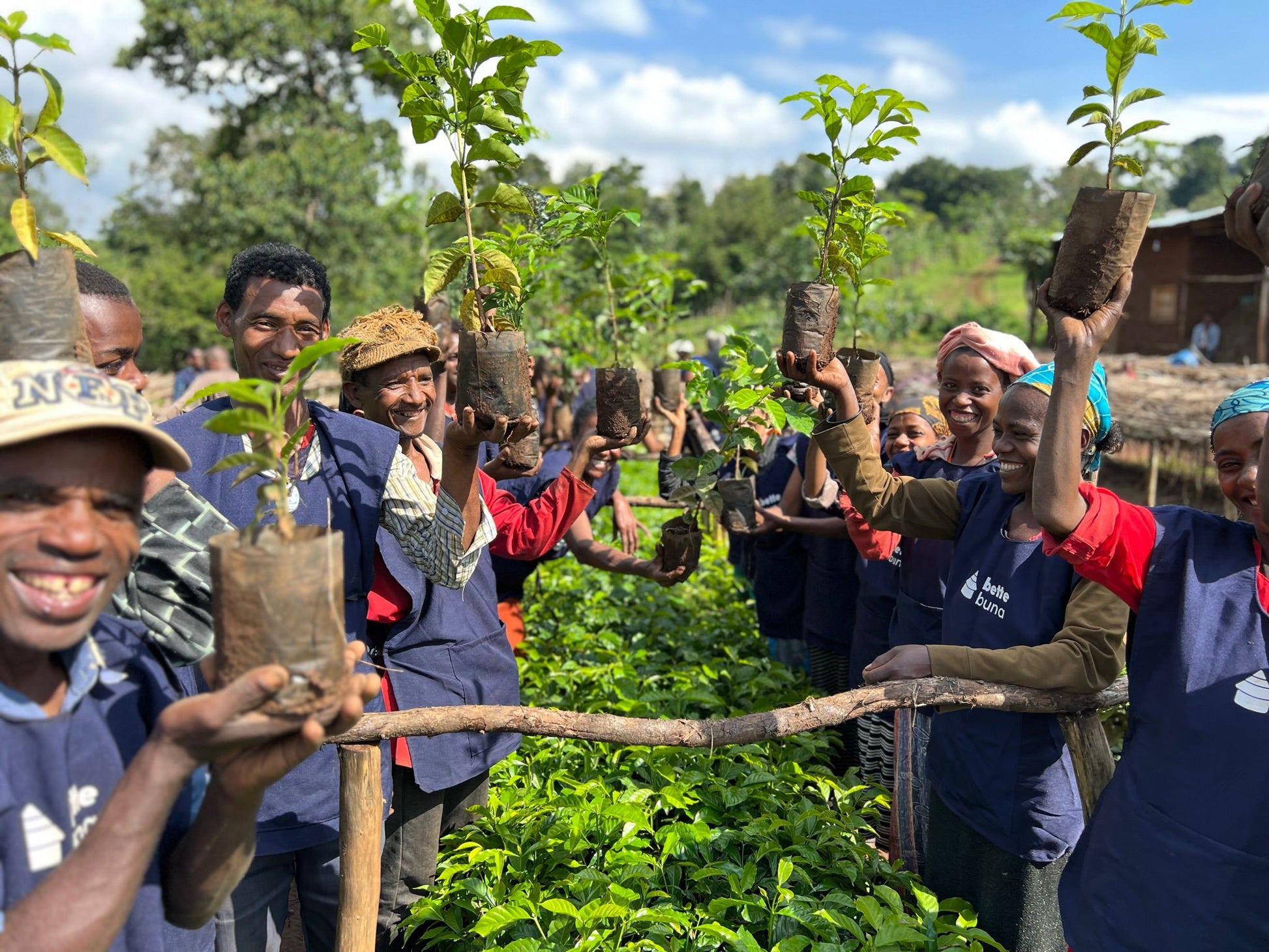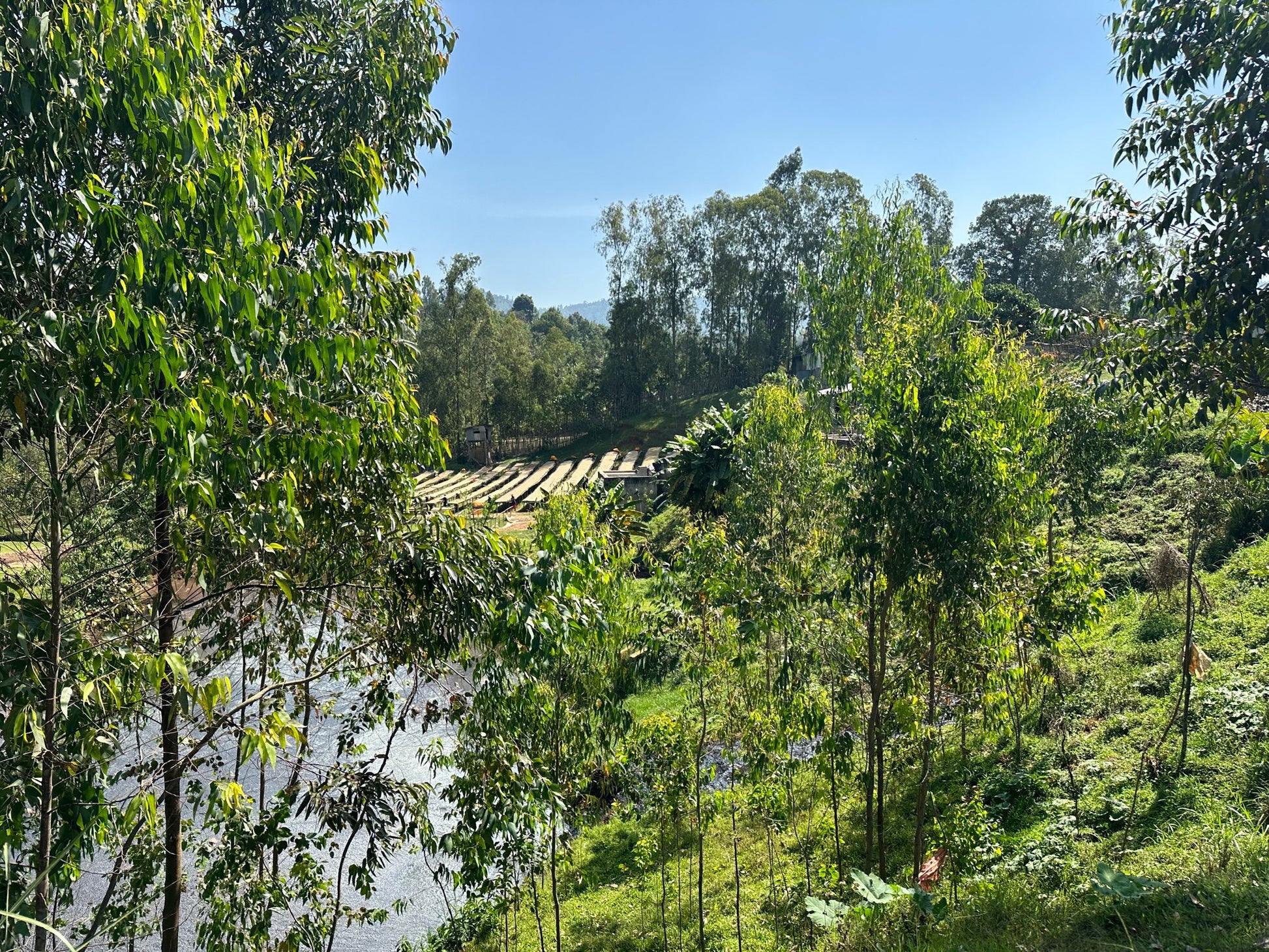
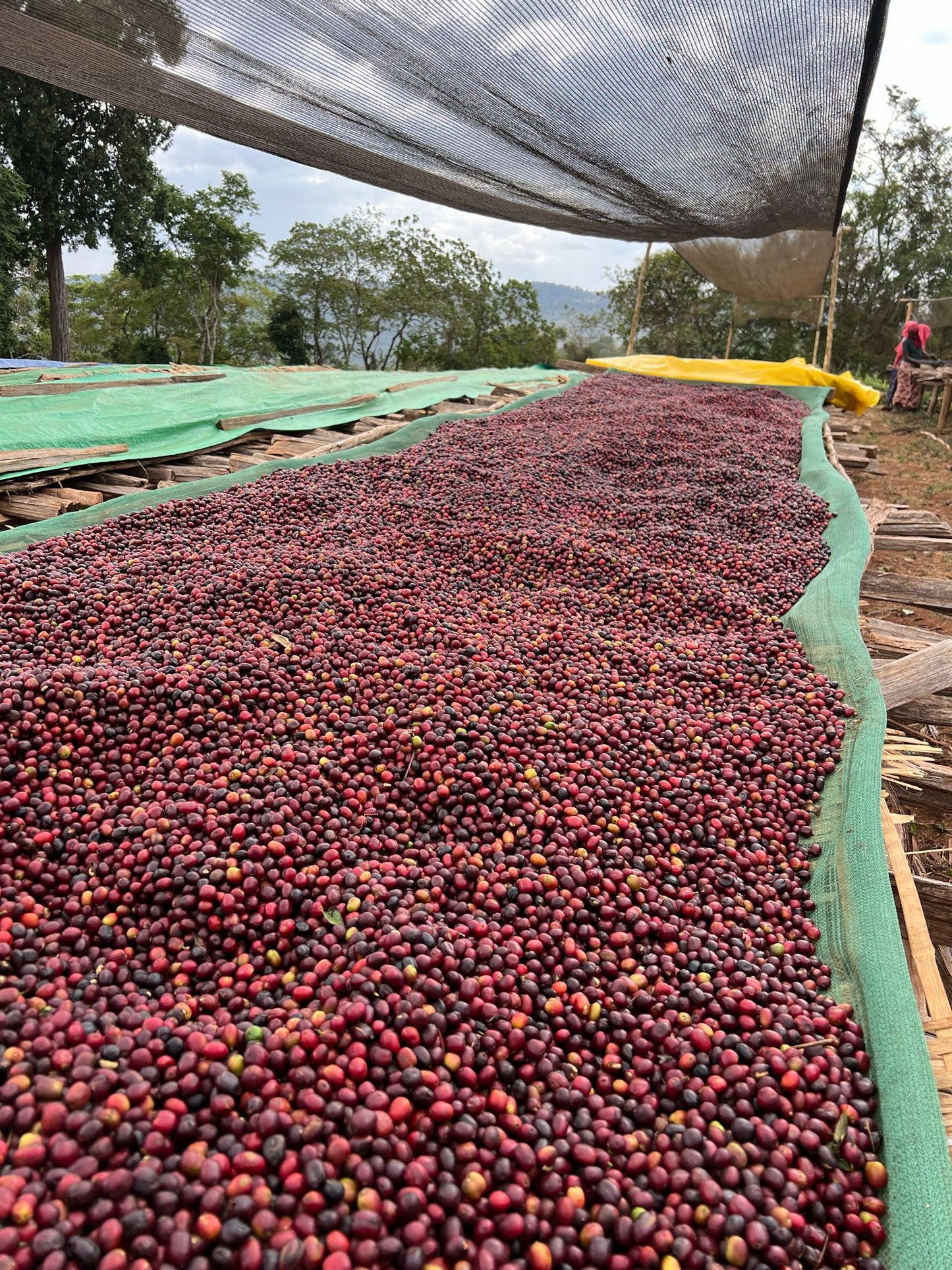
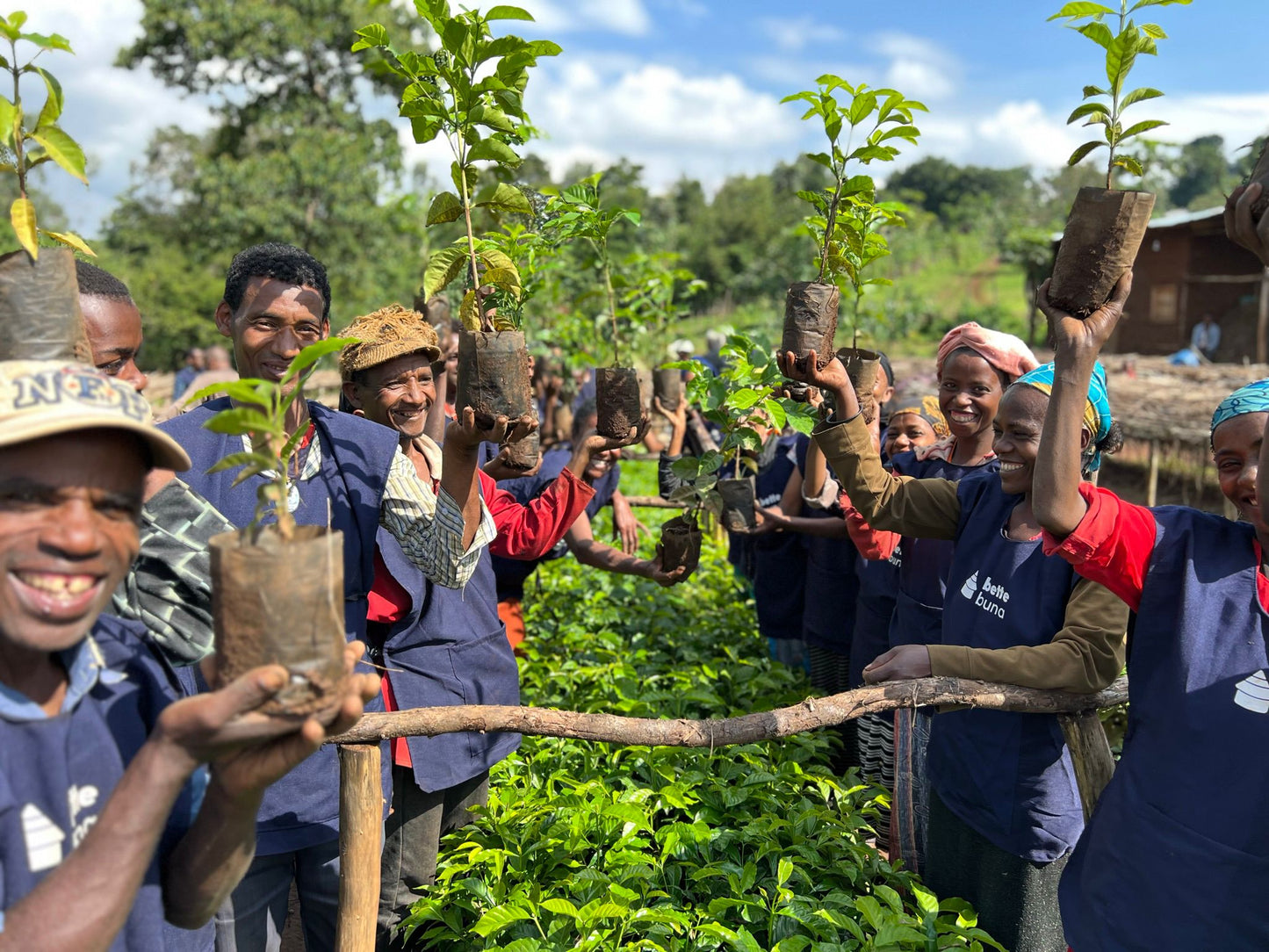
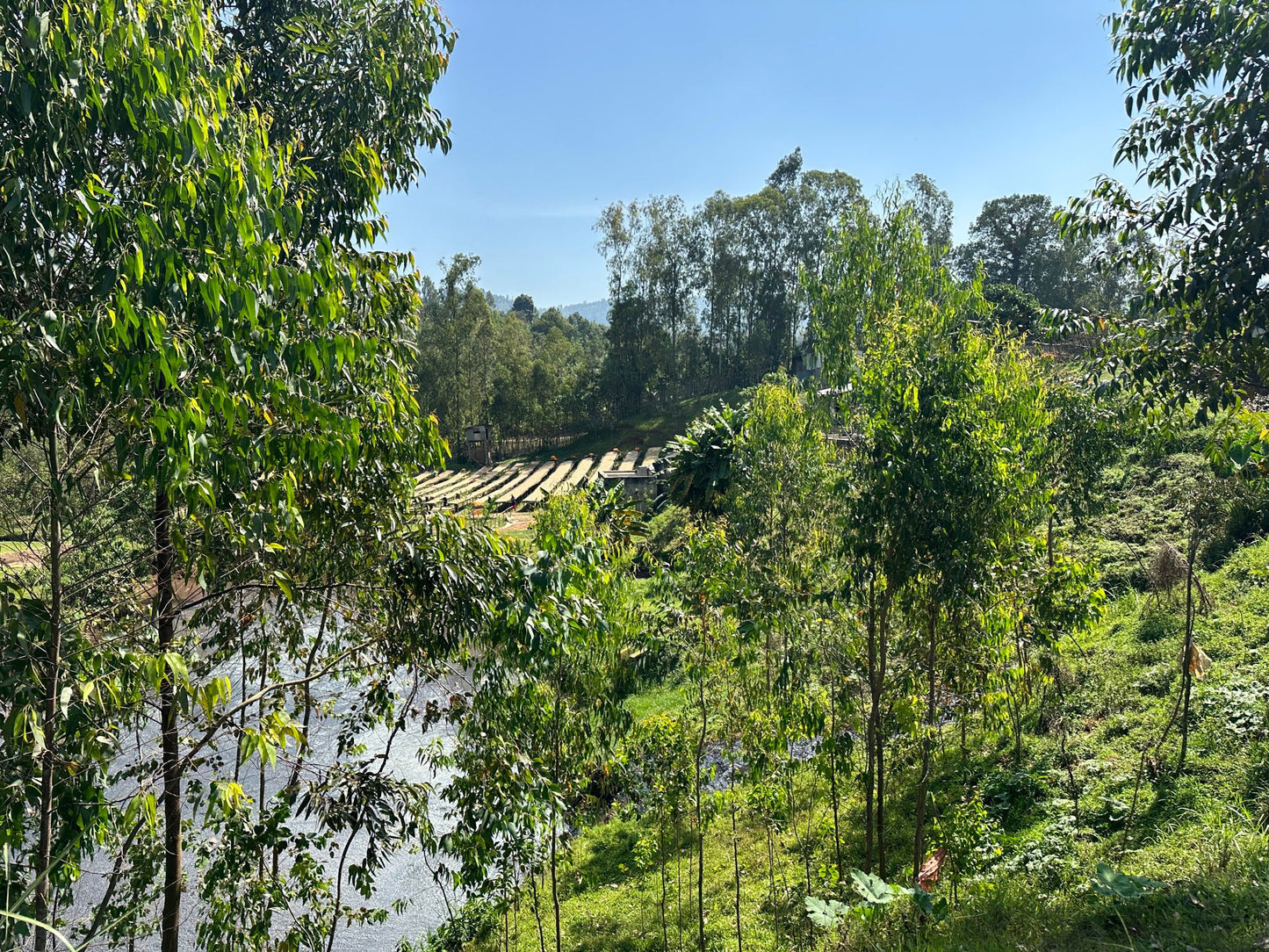



Brew Guide:
Best Brewed with: Espresso, Moka Pot, French Press
Medium-Heavy Roaster Influence:
Roasted for solubility & balanced acidity (E.A. decaf can be intensely tropical!) and texture.
Best rested: 1-2 weeks
For Filter: We recommend a ratio of 65g/L and 90°C water
For Espresso: 18g in, 40g out, 28-32s for a classic style of espresso.
We're tasting: Blueberry hot-cross buns, milk chocolate orange, muscovado, dried pineapple.
Please note - due to the nature of the physiochemical changes undergone during the decaffeination, this coffee will visually appear to be a darker roast than its actual “perceived” roast degree
Traceability:
Country of Origin: |
Ethiopia |
Region: |
Megadu, Guji |
Producer Group: |
Dawit & Hester Syoum, Alongside Demelash Hailu, ato Sentayehu, ato Saffay, gash Duba, Kemer Saffai, Abiti |
Station: |
Bette Buna Megadu |
Varieties: |
JARC Cultivars & local landraces |
Elevation: |
2000-2200 MASL |
Process: |
Cherries collected at Megadu and taken to a central processing point for floating and sorting. Dried as a natural over 3-4 weeks with shade control. Shipped to Germany for “E.A Process” (same as sugarcane) decaffeination by Coffee Compagnie GmbH. |
Import Partner: |
Paso Paso coffee/Bette Buna |
Harvest: |
23/24 - Arrived EU: Feb 25 Late shipment from last harvest & freshly decaffinated |
The Story:
We had fully planned to swap back to the Villamaría decaf for our summer rotation; however production capacity issues in Colombia have pushed that back.
It's funny - Raw Material were one of the first exporters to put high grade coffees through the Sugarcane decaf process - finding that the quality persevered. Since then, the trend for quality decaf has grown exponentially, and with it, the Descafescol decaf plant has been hitting maximum capacity.
If you're a Colombian coffee exporter and you want to get your coffees decaffeinated - production slots are few and far between, and often getting rolled to later dates. As such, we've had to wait for a later shipment for the return of Villamaría.
Coming in clutch we have a lot from the team at Bette Buna, coming in via the producer owned roastery Paso Paso in Germany, This lot is from the same crop year as our previous decaf - Telila - but late harvest & freshly decaffeinated, only becoming available in February of this year.
We first collaborated with Bette Buna with our "Scene Bette Daze" project last year; having enjoyed working together so much and the range of coffees we tried, we've got quite a lot more fresh crop on the water for the summer season.
Bette Buna:
The first Bette Buna (“House of Coffee”) farm was founded in 2019, after Dawit inherited his grandfather’s coffee farm in Sidama. Dawit’s grandfather was a respected community leader, and with that in mind Hester and Dawit set out to create a sustainable, community led future for coffee farming in Ethiopia. They intend to achieve this by producing higher quality coffees, with collaboration and community development intimately linked to this. The funds from fair pricing and export help pay for community education and increased living standards, with living incomes a pillar of the Bette Buna mission.
The Megadu farm in Guji is over 220 HA, lead by 3 community leaders (Abbaa Gadaa). Of this 220 HA, Bette Buna manages a quarter, acting as a pilot project for many of the community lead initiatives Hester and Dawit run. The processing station, located centrally in the farm, allows high value return processing (such as anoxic fermentation and extended ferments) alongside well executed classic processing, and crucially drying. Both farms produce their own coffee for production, but also purchase cherry from local smallholders for onwards processing.
E.A Decaf:
We love Sugarcane/EA decaf - it really is miles above other processes - but we think there's been a definitive monopoly of Colombian decaf as a result. The reason is as follows - Ethyl Acetate is a readily available solvent and natural compound found in many fruits and foodstuffs. It's very easily produced - ethyl alcohol created during fermentation is combined with acetic acid (vinegar) to create Ethyl Acetate, a compound which has a high affinity for selectively dissolving caffeine.
Colombia has two very complimentary agricultural industries - that of sugarcane, and of coffee. Sugarcane processing produces the raw materials to make plentiful, cheap ethyl acetate, using up a waste product for good use, and there is a ready supply of excellent coffee. Descafecol is the only "sugarcane" decaffeination plant in the world, and the explosion in popularity of this style of decaf has seen them run at full capacity non-stop for many years (sometimes with the drying protocols of their output somewhat compromised to keep the volume flowing). Colombia exports green coffee - you cannot import it, nor would it make financial sense to ship coffee from Ethiopia to Colombia for decaffination even if it was legally allowed (lest your decaf cost the same as a competition Gesha)
We've been itching to see the same process applied to other origins. Enter Coffee Compagnie in Germany. They've started using locally sourced Ethyl Acetate (sounds scary, but it really isn't) to run the same process, but due to their location in a consuming country (a major logistical transit point at that) means we can spread our decaf buying programme across a wider spread of origins, whilst keeping the profile of EA decaf we love so dearly.
- Choosing a selection results in a full page refresh.
- Opens in a new window.


